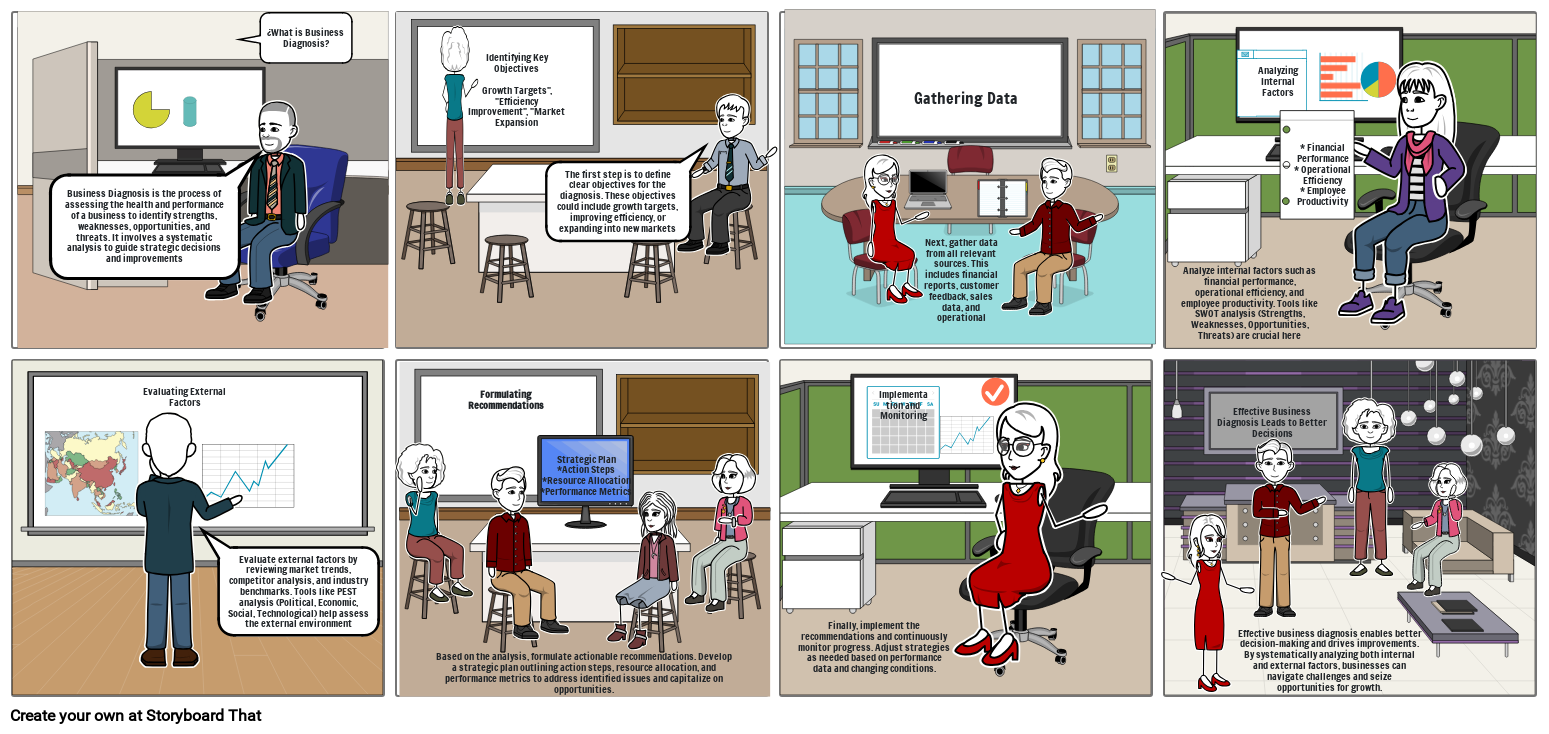Understanding Business Diagnosis

Storyboard-Text
- Gleiten: 1
- ¿What is Business Diagnosis?
- Business Diagnosis is the process of assessing the health and performance of a business to identify strengths, weaknesses, opportunities, and threats. It involves a systematic analysis to guide strategic decisions and improvements
- Gleiten: 2
- Identifying Key ObjectivesGrowth Targets", "Efficiency Improvement", "Market Expansion
- The first step is to define clear objectives for the diagnosis. These objectives could include growth targets, improving efficiency, or expanding into new markets
- Gleiten: 3
- Gathering Data
- Next, gather data from all relevant sources. This includes financial reports, customer feedback, sales data, and operational metrics
- Gleiten: 4
- Analyzing Internal Factors
- * Financial Performance* Operational Efficiency* Employee Productivity
- Analyze internal factors such as financial performance, operational efficiency, and employee productivity. Tools like SWOT analysis (Strengths, Weaknesses, Opportunities, Threats) are crucial here
- Gleiten: 5
- Evaluating External Factors
- Evaluate external factors by reviewing market trends, competitor analysis, and industry benchmarks. Tools like PEST analysis (Political, Economic, Social, Technological) help assess the external environment
- Gleiten: 6
- Formulating Recommendations
- Strategic Plan*Action Steps*Resource Allocation *Performance Metrics
- Based on the analysis, formulate actionable recommendations. Develop a strategic plan outlining action steps, resource allocation, and performance metrics to address identified issues and capitalize on opportunities.
- Gleiten: 7
- Implementation and Monitoring
- Finally, implement the recommendations and continuously monitor progress. Adjust strategies as needed based on performance data and changing conditions.
- Gleiten: 8
- Effective Business Diagnosis Leads to Better Decisions
- Effective business diagnosis enables better decision-making and drives improvements. By systematically analyzing both internal and external factors, businesses can navigate challenges and seize opportunities for growth.
Über 30 Millionen erstellte Storyboards

